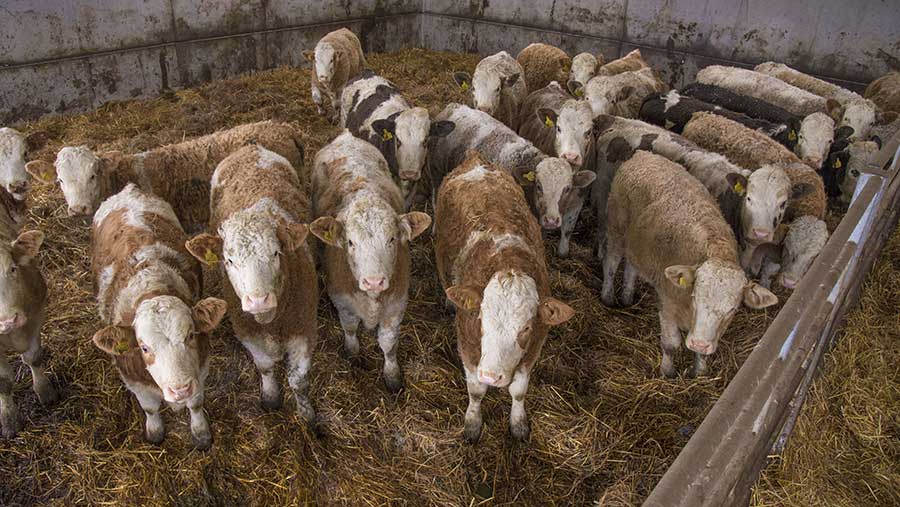4 tips to fight parasites in housed cattle this winter
 © FLPA / John Eveson/REX/Shutterstock
© FLPA / John Eveson/REX/Shutterstock Housing represents an effective time to control parasites picked up at pasture through the grazing season, according to animal health experts.
Growth rates and feed efficiency can benefit by treating cattle for fluke at housing. However, as with any treatments, the National Animal Disease Information Service (Nadis) stresses they should be based on evidence of infection (worms eggs counts, diagnostic testing).
See also: Q&A: Advice on worming cattle at housing
Nadis has issued the following advice to cattle farmers.
- Youngstock being housed after their first or second grazing season could benefit from a group three macrocyclic lactone or group one benzimidazole product. Consider this as control against encysted-stage larvae acquired later in the grazing season. Heavy burdens can lead to ostertagiosis.
- When dosing for fluke, try to avoid triclabendazole products if possible to maintain their efficacy. This approach may need a delayed treatment or two doses to make sure the drug is effective to ensure flukes are of sufficient age. If using closantel products, it is advised to treat six to seven weeks after housing or testing after this time to determine if a second treatment is needed.
- Louse infestation risk increases at housing as animal-to-animal contact is far greater. Group three macrocyclic lactone pour-on products have the added advantage of being effective against both sucking and chewing lice.
- Consult with your veterinarian about actives and approaches to use in terms of testing the efficacy of the products. Lots of information can be found on the COWS (Control of Worms Sustainably) website.
See more
